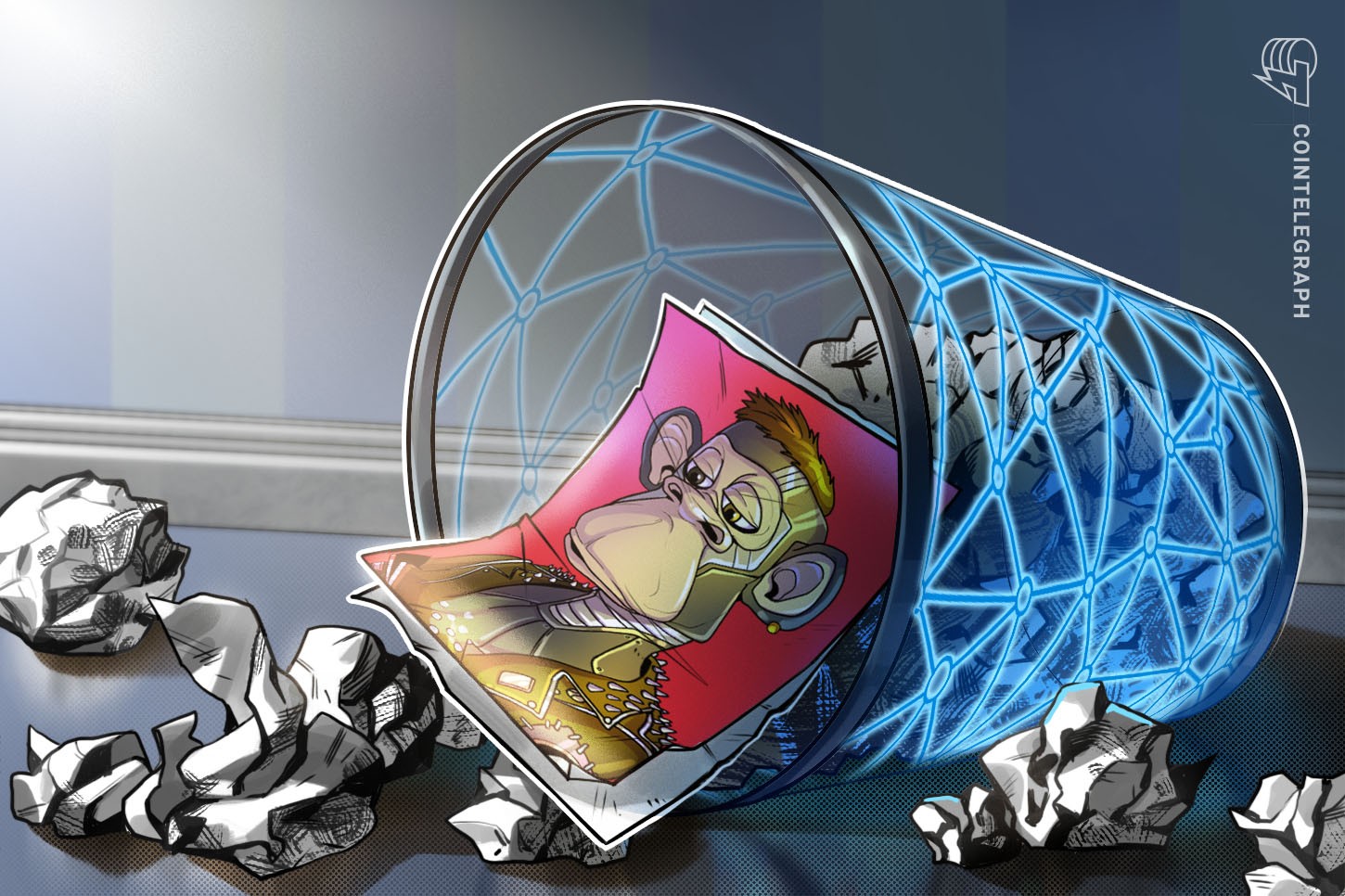It’s time to move on from Bored Ape Yacht Club. It’s bad for nonfungible tokens (NFTs). It gives critics ammo and distracts from the technology, which is where the real value lies.
For those on the outside looking in, NFTs are nothing more than overpriced monkey JPEGs — or whichever choice of animated animal profile picture is in the firing line.
NFTs, of course, are much more than that.
But because of Bored Apes, and the countless imitations they’ve spawned, NFTs are getting a bad rep. “Bubble,” “money laundering” and “scams” are all terminology associated by critics with the new “Beanie Babies craze.”
It’s a disparaging distraction.
Related: Bored Ape Yacht Club is a huge mainstream hit, but is Wall Street ready for NFTs?
Yes, Bored Apes are still priced at more than $100,000 (a fifth of what they were worth at the market’s peak). But they’re tied to the tumult of cryptocurrency volatility and market sentiment, which has fallen along with the tumbling crypto market.
You also have Ape-backed borrowers on the verge of liquidation and 143 Apes already stolen, including Seth Green’s Bored Ape, which he was forced to pay to get back. And, of course, there are also the fans who slammed Eminem and Snoop Dogg when they performed as their Apes at the latest MTA Video Music Awards.
Bored Apes are the face of the NFT hype cycle. They might be the closest thing to the aforementioned Beanie Babies in the NFT space because of their status. But there’s a categorical mistake in painting an entire industry with the same brush: The hype is not the technology.
If you look past what’s on the market, you’ll find unique ideas with real-world value.
Here’s one: carrying medical data. Researchers at Baylor College of Medicine have suggested that NFT ownership powered by smart contracts could provide citizens control of who accesses their personal health records. Citizens already give up their information to medical applications, but smart contracts could allow them to sell their data as NFTs if they choose.
Hospitals and private institutions routinely sell patients’ data via so-called data brokers to companies like Pfizer — it’s a multibillion-dollar industry. This might seem harmless, but you never agreed to it. Maybe you wouldn’t have if you knew how much your data was worth.
Related: A cure for copyright ills? NFTs promise to empower creative economies
Selling or securing your data as an NFT could become a real option, as long as the right hack-prevention measures are in place. Adding encryption to NFTs can keep content private while also enabling it to remain in public storage.
Another service NFTs can perform: streamlining royalty payments. Artist resale royalty rights haven’t been codified into U.S. law, only proposed. The EIP-2981 royalty standard made this a coding choice on Ethereum, leading the way for Polygon and other chains.

With enhanced security and the versatility of NFTs, private documents can be airdropped into users’ wallets. These could be legal documents served by law firms or deeds to properties. Hypothetically, we could see a work contract on the blockchain, which interfaces with decentralized finance payment protocols to provide salaries based on duties completed.
Despite the endless cries of “wen utility” that have echoed through NFT communities, the utility was always there: A token on the blockchain is verified that promises interoperability via a self-executing hard-coded agreement. It’s the gateway to digital and physical real estate and on-chain gaming experiences or whatever content your digital identity unlocks.
Related: Get ready for the feds to start indicting NFT traders
It’s still growing. On trading platform NFTGo, 10x more Ethereum wallets hold an NFT compared with August 2020. Doodles just raised $54 million to strengthen its intellectual property. Creators are building, and many skilled underground artists are making more now than ever before.
NFT art has flipped the traditional art industry on its head — not just because of the headline-grabbing numbers but also the promise of provenance. Even if profile pictures stole the show, the technology came first and will thrive without its Bored Ape counterparts.
It might also be better to leave the term “NFTs” in the past as a genre only defined by a limited boom-and-bust cycle and to move forward with “digital collectible,” a term that some have started using.
Some kind of split is inevitable — and healthy — to free builders from the burden of overinflated expectations, market collapses and celebrity cash grabs.
If you still don’t see the value, you might still have Bored Ape goggles. Take them off. There’s a whole suite of NFT technology use cases on the rise.
The author, who disclosed his identity to Cointelegraph, used a pseudonym for this article. This article is for general information purposes and is not intended to be and should not be taken as legal or investment advice. The views, thoughts, and opinions expressed here are the author’s alone and do not necessarily reflect or represent the views and opinions of Cointelegraph.


